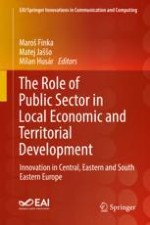2019 | OriginalPaper | Chapter
5. Energy Sensitive Spatial Planning as a Public Sector Tool Towards Sustainable Economic and Territorial Development
Authors : Elena Dimitrova, Milena Tasheva-Petrova, Angel Burov, Irina Mutafchiiska
Published in: The Role of Public Sector in Local Economic and Territorial Development
Publisher: Springer International Publishing
Activate our intelligent search to find suitable subject content or patents.
Select sections of text to find matching patents with Artificial Intelligence. powered by
Select sections of text to find additional relevant content using AI-assisted search. powered by
